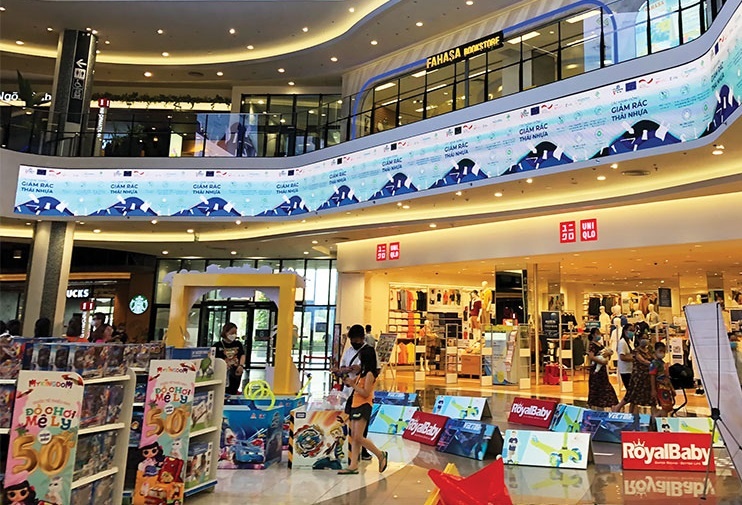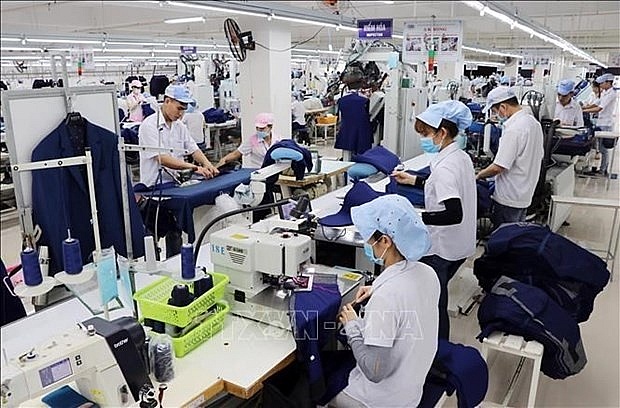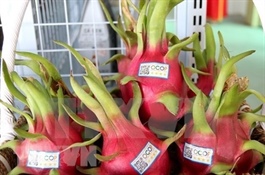Retail arena maintaining its promise
Retail arena maintaining its promise
As retailers expand their presence or forge stronger ties with Vietnamese suppliers, there is growing consensus about the untapped promise of Vietnam’s retail landscape.

Thailand’s C.P. Group and its associated entities last week released reports about the potential acquisition of a stake in one of Vietnam’s retail leaders. The focal point of the speculation has been Bach Hoa Xanh, a flagship of Mobile World Group.
Yet, even amid its unequivocal dismissal, market dynamics hint that Vietnam’s retail landscape is far from cooling down.
Reuters last month reported that Singaporean sovereign wealth fund GIC is among the potential suitors for Bach Hoa Xanh. The speculated transaction could catapult the grocery chain’s market valuation to $1.5-1.7 billion.
Sources have added that multiple bidders, including entities from Thailand, are in the fray for the stake. “We’re approaching the finish line in terms of negotiations,” mentioned an insider familiar with the proceedings.
If the discussions land positively, the acquisition could be made official early in 2024.
Bach Hoa Xanh, established in 2015, now boasts a robust network of over 1,700 stores. In terms of financial performance, the chain projects to break even by the close of 2023.
Another retail giant, Lulu Group, is making waves in this country through amplifying export of Vietnamese goods to the international retailer chain. Known for its sprawling supermarket chain across 23 countries encompassing the Middle East, Asia, and Europe, Lulu is strategically positioning itself in Vietnam.
With annual revenues exceeding $8 billion, it has already established its presence with a representative office in Ho Chi Minh City, gearing up to procure Vietnamese goods for its global supermarket operations.
In a meeting in mid-October with Vietnamese Prime Minister Pham Minh Chinh, Shehim Kottilingal, regional director of LuLu Saudi Hypermarkets, conveyed his optimism regarding investment here.
“I feel confident about Vietnam as a politically stable destination with immense agricultural export potential,” he said. “Our grand objective is to amplify our imports from Vietnam two- or even three-fold in the foreseeable future.”
He further indicated the group’s plans to expand its market in Vietnam, including purchasing agricultural produce and building agricultural processing plants in the country.
“We already import 30 per cent of Vietnam’s fresh limes for our Saudi Arabian market and 40 per cent of its cashew nuts,” Kottilingal said, “We’re looking forward to importing other agricultural products, such as fish and various fruits.”
Additionally, he appealed to the Vietnamese government to ease licensing procedures for building processing plants and encourage imports of Vietnamese agricultural goods. Kottilingal also proposed direct flight routes between Saudi Arabia and Vietnam to facilitate food and fresh produce imports.
In the same vein, Walmart is poised to further deepen ties through stronger partnership with more Vietnamese suppliers.
Presenting at a forum in mid-September in Ho Chi Minh City, Avineesh Gupta, Walmart’s deputy CEO, highlighted the significant export potential of Vietnam’s agricultural produce, including durian, mango, and coconut, among others.
“The group is actively seeking a more extensive and consistent supply source. For Vietnamese enterprises to become partners with Walmart, they need to establish trust and deliver high-quality products,” Gupta said.
In the furniture retail segment, Japanese group Nitori disclosed plans to launch its inaugural store in Vietnam this month. The initiative aligns with the brand’s strategic ambition to square off with Ikea in the Asian market.
As a precursor to this retail introduction, Nitori had established its manufacturing operations in Vietnam, anchoring two dedicated facilities in Hanoi and the southern province of Ba Ria-Vung Tau.
September also witnessed Matsukiyo, the Japanese beauty and healthcare chain, embark on its maiden venture in Hanoi. Its addition to Vincom Mega Mall in Times City escalates its Vietnam store count to seven.
Hiroki Miyaoka, managing director of Matsukiyo Vietnam, said, “The Vietnamese population has exhibited an elevated consciousness towards health and beauty over the past three years. Given Hanoi’s stature as a confluence of culture, economy, and politics, it mirrors the multifaceted potential of the market.”
Foreign retail giants like Central Group and AEON Mall are also accelerating their expansions beyond Ho Chi Minh City and Hanoi. For instance, Central Retail launched its Come Home furniture brand and the Mini Go! store in Dong Nai and Quang Nam provinces, respectively.
Similarly, AEON introduced a new flexible supermarket concept in Binh Duong province in the south.
Furthermore, Thiso Retail - part of Thaco Group - is finalising its third e-mart project in Ho Chi Minh City’s Go Vap district. Additionally, the anticipated AEON Mall Hue, with a floor space of approximately 138,000sq.m, is set to commence operations next year.
Despite the early economic slump in 2023, retailers are optimistic about the year-end. Nguyen Anh Duc, chairman of the Vietnam Retailers Association, said, “The retail sector has shown positive recovery signs in the latter months of this year thanks to stimulus policies, including a 2 per cent VAT reduction and lowered lending rates.”
However, challenges lurk on the horizon. Changing consumer behaviours are evident, with tens of millions of consumers opting for online shopping, and economic stagnation impacting the resilience of businesses.
“Vietnamese retailers are restructuring their operations and sourcing to align with the evolving consumer preferences, shifting towards smarter and more economical approaches,” Duc said, stressing the importance of digital transformation in keeping pace with the market’s cashless transaction trends.
The e-commerce retail sector, with an estimated revenue of $20.5 billion in 2023, constitutes roughly 8 per cent of the nation’s total retail and consumer service revenue. Specifically, for e-retail, it represents approximately 15 per cent of the total share.























